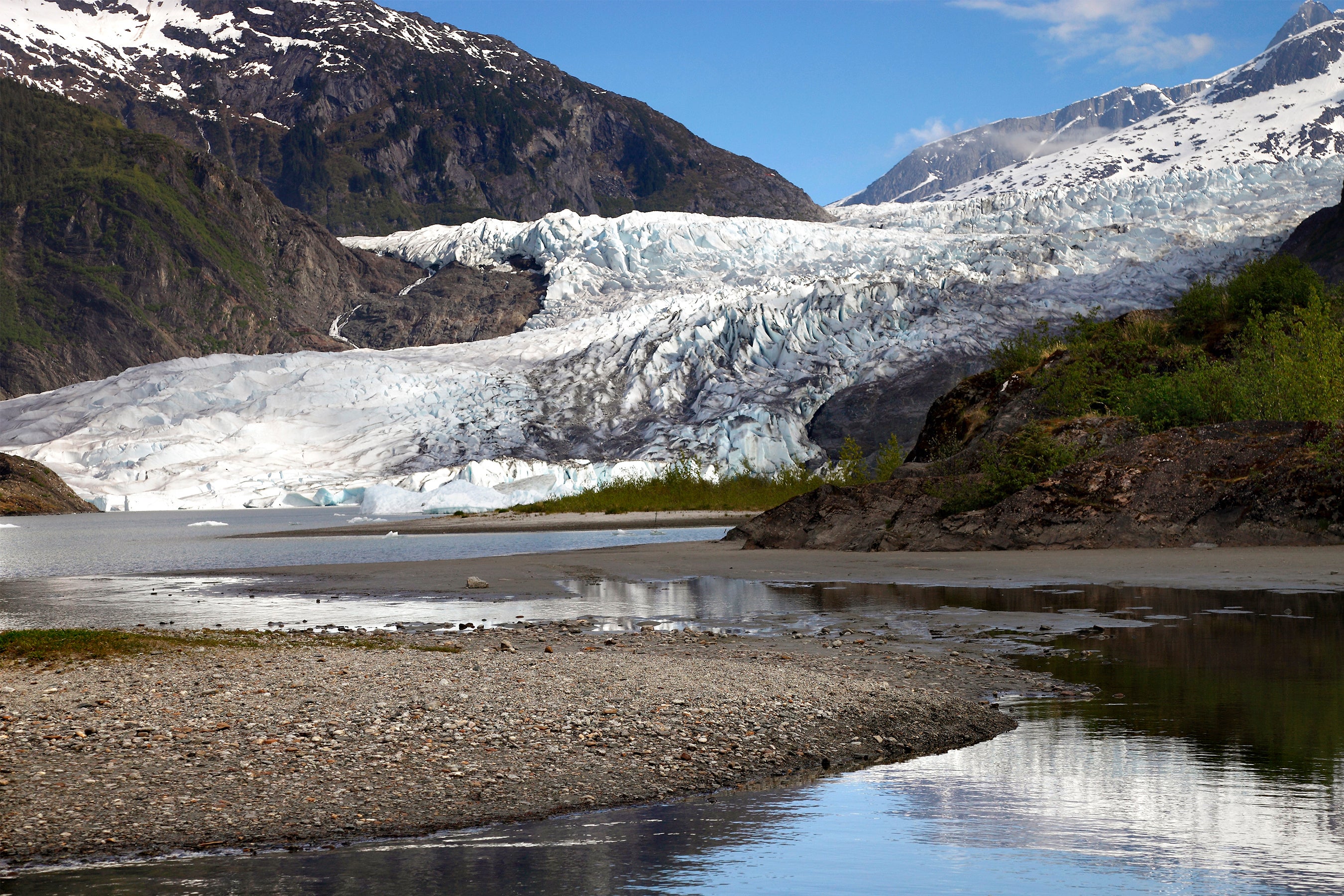
CLIMATEWIRE | Melting glaciers may be capable of shrinking much faster than scientists previously thought, according to a new study that adds to concerns about rapidly melting Antarctic ice, including the massive Thwaites Glacier, often called the “Doomsday Glacier” for its potential effect on sea-level rise.
The study, published in Nature, found that thousands of years ago, glaciers in Europe retreated by up to 2,000 feet a day — more than a quarter-mile — for short periods. That’s the fastest rate ever recorded and far faster than previous studies had suggested was possible.
The findings could provide new insight into the fate of today’s ice sheets and may suggest that glaciers in modern-day Greenland and Antarctica could melt faster than expected.
That includes some of the world’s biggest and most ominous glaciers such as Thwaites, which contains enough ice to raise global sea levels by two feet on its own.
Thwaites shares some characteristics with the rapidly retreating European glaciers of old. Some parts of the glacier rest on top of smooth, flat bedrock — the kind of topography that may help facilitate short bursts of intense glacier retreat, according to the new stud.
“One of the main punch lines of our paper is that under a fixed rate of melting, you would get markedly different rates of retreat over different bed shapes,” said Christine Batchelor, an ice sheet expert at the University of Newcastle in the United Kingdom and the new study’s lead author.
The rapid bursts of glacier retreat happened thousands of years ago, when the last ice age was drawing to a close and much of the Northern Hemisphere was covered in ice.
The study looked at the seafloor off the coast of Norway. Huge slabs of ice rested there toward the end of the last ice age, around 15,000 to 19,000 years ago. Today, the ice is gone — but telltale signs remain, including ridges in the rocky ocean floor that show where the ice moved and settled as the glaciers melted and shrank.
By analyzing the amount of space between the ridges, the scientists measured how quickly the ice melted and retreated over time.
They found that the places with the fastest rates of retreat occurred in the areas with the flattest bedrock. It’s simple physics, the researchers suggest. Ice is less dense than water — and in these flat areas, with no sloping bedrock pressing up against the bottom of the glacier, ice is especially buoyant. It nearly floats above the ground.
That likely made it easier for the glaciers to slip backwards over the bedrock as they melted and crumbled into the sea.
The study also found that the fastest pulses of retreat were short-lived, lasting just days or a few months at most. Still, losing hundreds or thousands of feet of ice each day adds up to substantial losses — and substantial contributions to global sea level rise — even over short periods.
The findings add a new layer to scientists’ understanding of the factors affecting glacier retreat. Until now, researchers have generally assumed that the highest rates of retreat occur in places with steep topography, where the bedrock slopes inland away from the sea, making it easier for ice to slide backwards as it melts.
Both theories are probably correct, though in different ways, Batchelor said. Over long periods, sloping bedrock tends to facilitate higher rates of ice loss. But over short periods, flat bedrock allows for small pulses of extremely fast retreat.
Both scenarios can cause large levels of ice loss. And both grow more intense and more dangerous the faster the ice is melting.
The new study notes that the Norwegian ice was likely experiencing extremely high melt rates during its bursts of rapid retreat. Faster melting helps the ice detach from the bedrock, making it easier for the glacier to crumble and retreat.
The melt rates were likely higher than the melting observed at most glaciers in present-day Antarctica. Still, Batchelor said, even the current melt rates in Antarctica combined with the flattest areas of bedrock “could still end up with retreat rates on the order of hundreds of meters per day.”
That’s what drew their attention to places like Thwaites.
Until recently, Thwaites was retreating at a pace of about one kilometer each year. It’s currently stabilized itself on top of a ridge in the bedrock, and it’s unclear when it may begin moving inland again. But once it does, the glacier is only about four kilometers away from an area with relatively smooth flat bedrock — the kind of place where pulses of rapid retreat could occur.
The scientists aren’t sure rapid retreat will happen should the glacier hit that spot. But it’s a possibility, they say — one that may have been overlooked before the new research was completed.
The new findings can help scientists update computer models they use to predict the future of the world’s ice sheets, Batchelor added. Improved modeling can give scientists a better idea of how the rapid, short-lived pulses of retreat may affect glaciers around the world.
Scientists still aren’t sure about “the wider effect of what happens on the ice sheet after you’ve had one of these pulses,” Batchelor said. “We’re not sure if the ice stabilizes again after it’s experienced a pulse of rapid retreat — or if that could set in motion a wider set of ice dynamic responses that could lead to further losses.”
Reprinted from E&E News with permission from POLITICO, LLC. Copyright 2023. E&E News provides essential news for energy and environment professionals.


